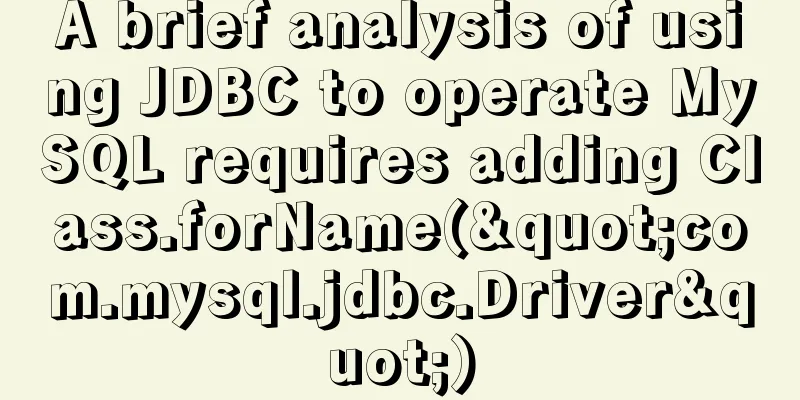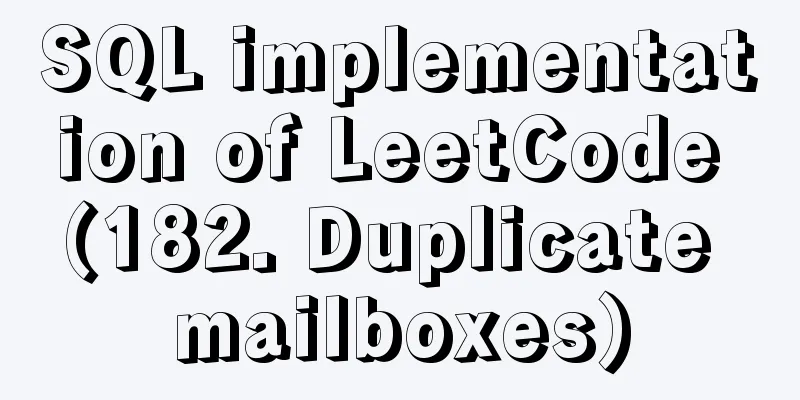In-depth understanding of Mysql logical architecture

|
MySQL is now the database used by most companies and enterprises. The reason for using MySQL is that MySQL is open source software. Some capable companies will modify and adjust the existing MySQL architecture to suit their own business needs. One reason is that MySQL is free, while Oracle service is relatively expensive. For many start-up companies, it is the most suitable database. The reason why we need to understand the logical architecture of MySQL is just like when we do development ourselves, we first need to master the layered architecture used by our own system, so that if there is a problem in any link during the development process, it will be easy to troubleshoot. The same is true for understanding the logical architecture of MySQL. When we use MySQL, we don’t know when problems will occur, but when problems occur (such as optimizing query sql, where to start), we can locate the problem more clearly.
1.ConnectionsWe connect to the Mysql service as a client to connect to the Mysql server. Mysql can connect to various programming language platforms 2. Management Services & UtilitiesAs a management and control tool for MySQL services, such as backup, restore, replication, clustering, etc. 3. Connection PoolThe main function of the connection pool is to provide connection authentication, thread reuse, connection number limit, etc. 4.SQL InterfaceHere we mainly receive Mysql DML, DDL statements, as well as stored procedures, views, triggers, etc. 5. ParseThe main thing here is to parse the SQL string passed in. For example, the JDBC programming we first came into contact with is to send the SQL statement of string type to MySQL, and then the parser first performs lexical analysis on the SQL statement to form a syntax tree, and then performs grammatical analysis on the syntax tree to see whether each word segment meets the SQL92 standard. If it does, it will execute the next business processing link. 6. Query Optimizer The query optimizer analyzes the SQL statement passed to it to determine whether it is the optimal execution statement, mainly focusing on the following three aspects: 7. Query Cache (Cache & Buffer)MYSQL will hash each SQL statement and put the hash value into a map. Every time a SQL statement comes, the hash value of the SQL statement will be calculated first to see if they are the same. If they are the same, the SQL statement in memory can be executed without having to parse and optimize the new SQL statement, thus speeding up the execution efficiency. 8. Pluggable Storage EnginesThe MSQL storage engine supports pluggable features, that is, users can replace the storage engine they want to use at will, or customize their own storage engine. Here we mainly analyze and compare the INNODB and MYISAM storage engines.
Usually, when it comes to selecting a storage engine, you should mainly choose it based on business needs, and you can refer to their respective characteristics. Storage engine selection:InnoDB:Supports transaction processing, foreign keys, crash recovery capabilities and concurrency control. If you need to have high requirements for transaction integrity (such as banks) and require concurrency control (such as ticket sales), then choosing InnoDB has great advantages. If you need a database with frequent update and deletion operations, you can also choose InnoDB because it supports transaction commit and rollback. MyISAM:Inserting data is fast, and space and memory usage are relatively low. If the table is mainly used to insert new records and read records, then choosing MyISAM can achieve high processing efficiency. If the application's integrity and concurrency requirements are relatively low, it can also be used. MEMORY:All data is in memory, and data processing speed is fast, but security is not high. If you need fast reading and writing speeds, have low requirements for data security, and do not need persistent storage, you can choose MEMOEY. It has requirements on the size of the table and cannot create a table that is too large. Therefore, this type of database is only used in relatively small database tables. Here is a simple execution flow chart of MYSQL. With this chart, you will have a clear understanding of the overall execution process of MYSQL.
This is the end of the introduction to the logical architecture of MYSQL. Of course, MYSQL also has a corresponding physical architecture, but this part mainly involves the various log files of MYSQL, as well as the data files and index files of each table, which will be introduced in the following chapters. The above is the detailed content of in-depth understanding of MySQL logical architecture. For more information about MySQL logical architecture, please pay attention to other related articles on 123WORDPRESS.COM! You may also be interested in:
|
<<: Docker image access to local elasticsearch port operation
>>: React encapsulates the global bullet box method
Recommend
JS Easy to understand Function and Constructor
Table of contents 1. Overview 1.1 Creating a func...
Detailed explanation of the differences between similar tags and attributes in HTML
【1】<i></i> and <em></em> ...
The effect of CSS dynamic gradient border rotating around the content area (example code)
Rendering After looking up relevant information o...
Is your website suitable for IE8?
During the Olympic Games, IE 8 Beta 2 will be rele...
How to view and clean up Docker container logs (tested and effective)
1. Problem The docker container logs caused the h...
Docker executes a command in a container outside the container
Sometimes we want to execute a command in a conta...
Ubuntu 18.04 obtains root permissions and logs in as root user
Written in advance: In the following steps, you n...
Open the Windows server port (take port 8080 as an example)
What is a Port? The ports we usually refer to are...
How to use CSS to achieve two columns fixed in the middle and adaptive
1. Use absolute positioning and margin The princi...
Detailed explanation of Dockerfile to create a custom Docker image and comparison of CMD and ENTRYPOINT instructions
1. Overview There are three ways to create a Dock...
CSS sample code to achieve circular gradient progress bar effect
Implementation ideas The outermost is a big circl...
Summary of horizontal scrolling website design
Horizontal scrolling isn’t appropriate in all situ...
Docker uses nextcloud to build a private Baidu cloud disk
Suddenly, I needed to build a private service for...
Detailed explanation of the process of nginx obtaining the real source IP after passing through multiple layers of proxy
question Nginx takes $remote_addr as the real IP ...
How to use Antd's Form component in React to implement form functions
1. Construction components 1. A form must contain...












